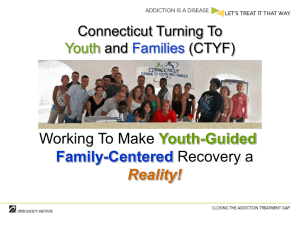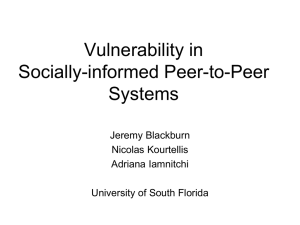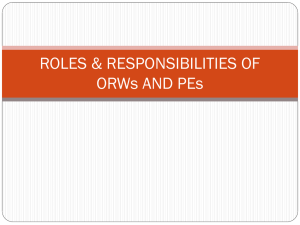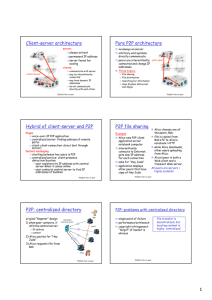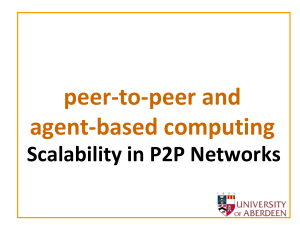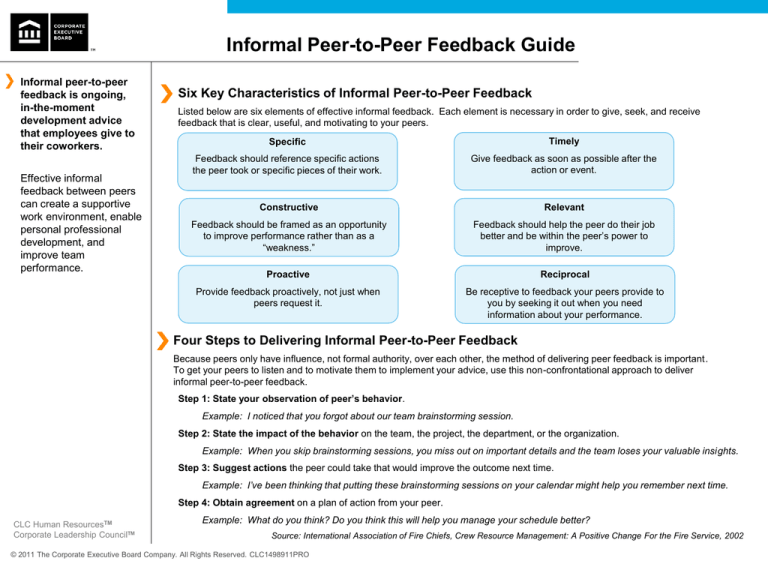
Informal Peer-to-Peer Feedback Guide
Informal peer-to-peer
feedback is ongoing,
in-the-moment
development advice
that employees give to
their coworkers.
Effective informal
feedback between peers
can create a supportive
work environment, enable
personal professional
development, and
improve team
performance.
Six Key Characteristics of Informal Peer-to-Peer Feedback
Listed below are six elements of effective informal feedback. Each element is necessary in order to give, seek, and receive
feedback that is clear, useful, and motivating to your peers.
Specific
Timely
Feedback should reference specific actions
the peer took or specific pieces of their work.
Give feedback as soon as possible after the
action or event.
Constructive
Relevant
Feedback should be framed as an opportunity
to improve performance rather than as a
“weakness.”
Feedback should help the peer do their job
better and be within the peer’s power to
improve.
Proactive
Reciprocal
Provide feedback proactively, not just when
peers request it.
Be receptive to feedback your peers provide to
you by seeking it out when you need
information about your performance.
Four Steps to Delivering Informal Peer-to-Peer Feedback
Because peers only have influence, not formal authority, over each other, the method of delivering peer feedback is important.
To get your peers to listen and to motivate them to implement your advice, use this non-confrontational approach to deliver
informal peer-to-peer feedback.
Step 1: State your observation of peer’s behavior.
Example: I noticed that you forgot about our team brainstorming session.
Step 2: State the impact of the behavior on the team, the project, the department, or the organization.
Example: When you skip brainstorming sessions, you miss out on important details and the team loses your valuable insights.
Step 3: Suggest actions the peer could take that would improve the outcome next time.
Example: I’ve been thinking that putting these brainstorming sessions on your calendar might help you remember next time.
Step 4: Obtain agreement on a plan of action from your peer.
CLC Human ResourcesTM
Corporate Leadership CouncilTM
Example: What do you think? Do you think this will help you manage your schedule better?
Source: International Association of Fire Chiefs, Crew Resource Management: A Positive Change For the Fire Service, 2002
© 2011 The Corporate Executive Board Company. All Rights Reserved. CLC1498911PRO
Informal Peer-to-Peer Feedback Guide
Do’s and Don’ts
Common Informal Feedback Mistakes:
Don’ts
Guidelines for Informal Feedback:
Do’s
Don’t…
Do…
Give developmental feedback in public
Give developmental feedback in private; some people also prefer to
receive positive feedback in private
Present many issues at once
Use generalized language or characterizations
Use value judgments or insert your opinion or feelings
State your interpretations of your observations
Example: “I noticed you don’t like creating quarterly reports.”
Focus only on negative feedback
Provide feedback on non-work related personal characteristics such
as religion, gender, or nationality; this is inappropriate and could also
be illegal
Focus feedback on one or two issues at a time
Focus on specific behaviors that the peer displayed
Remain objective; describe the behavior in terms of its impact on the
team, project, or organization
State only your observations of the behavior; your interpretations
could be incorrect
Example: “I noticed you’ve been leaving your quarterly reports until
the last minute.” (There could be many reasons they are starting
the reports late.)
Talk down to the feedback recipient
Provide positive feedback as well as negative; if you tell your peers
what went well, they will know what to do more of in the future
Become defensive or argumentative when receiving feedback from a
peer
Focus only on the behaviors that will help your peers to perform their
jobs better
Feedback Topics that Should Come from Managers, Not
Peers
Involve the feedback recipient in the process and treat them as an
equal
Violations of company policy
Treat the feedback as a low-risk opportunity for you to learn about
yourself and improve your performance.
Illegal activity that occurs at work or is affecting work relationships
Extremely negative feedback
Chronic behavior or work problems
Anything you feel particularly uncomfortable with or if you fear an
extreme reaction from the feedback recipient
Anything that is unrelated to a project in which you are involved
CLC Human ResourcesTM
Corporate Leadership CouncilTM
© 2011 The Corporate Executive Board Company. All Rights Reserved. CLC1498911PRO


